Sennheiser HD 280 PRO Review | Decibel Peak
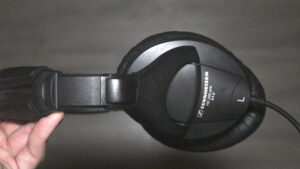
The Sennheiser HD 280 PROs were the first pair of professional studio headphones I ever owned.
Product In-Stock: InStock
3.5
The Sennheiser HD 280 PROs were the first pair of professional studio headphones I ever owned.
I still use them to this day and it’s been over 10 years ago (just to give you an idea). That’s German-made quality alright, but I have to admit that the HD 280 PROs aren’t my favourite headphones for studio work.
HOWEVER, they’re still an essential part of my location sound kit.
That’s what I recommend them for and I also recommend them for DJs. We’ll be talking more about that later, but we’ll also be talking about what these headphones CAN’T do.
It’s an important thing to consider, so keep reading to find out what I like, don’t like about the Sennheiser HD 280 PROs and WHO I’d recommend them to.
So, let’s find out if the Sennheiser HD 280 PROs are right for you…
Table of Contents
How does the Sennheiser HD 280 Pro sound?
Now, let’s talk about how these headphones sound. Overall, the HD 280 Pro has a very neutral sound signature. This means that the bass, mids, and highs are all very balanced. However, some users may find the bass to be lacking, especially if they’re used to headphones that emphasize the low end.
Lows
The bass on the Sennheiser HD 280 Pro is tight and accurate, but it’s not particularly powerful. If you’re a basshead, these headphones might not be for you. However, if you’re looking for a more accurate representation of your music, the HD 280 Pro does an excellent job.
Mids
The mids on these headphones are very clear and detailed. Vocals and instruments are both very present in the mix, which makes these headphones great for monitoring during recording.
Highs
The highs on the HD 280 Pro are also very clear and detailed. Cymbals and other high-frequency instruments are very present in the mix, but they’re not overly bright or harsh.
What I like about the Sennheiser HD 280 PRO
Out of all the headphones I’ve ever used, I have to say that the Sennheiser HD 280 PROs are the most portable (and flexible).
The ear cups swivel and the entire headphones can be folded to fit just about anywhere.
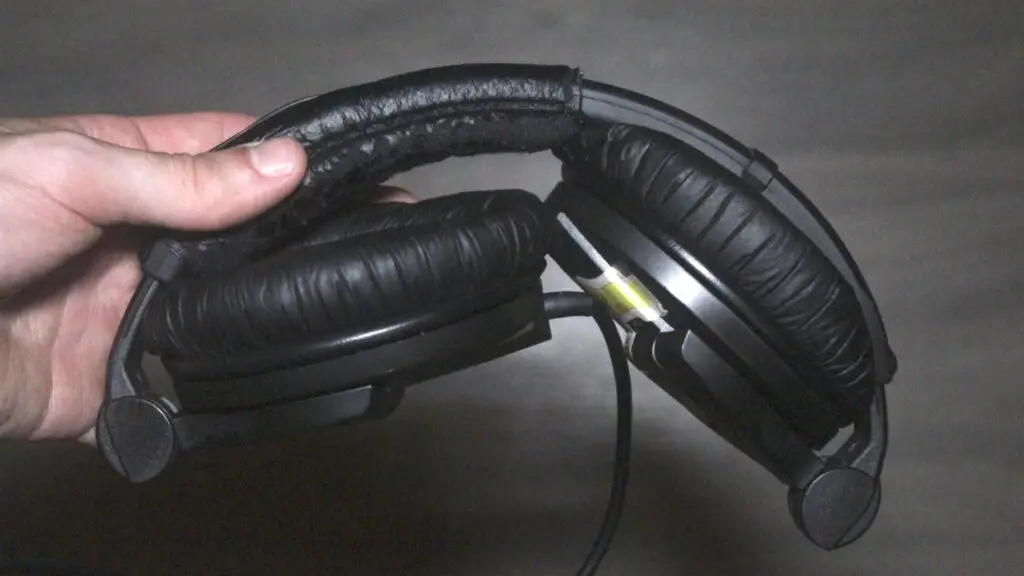
I also really like the sound isolation on the HD 280 PROs.
Of course, there’s definitely better out there, but it’s the best you’ll get at this price range. It gets the job done out in the field and doesn’t cause any microphone-bleed in the studio.
If you really want more isolation, you can actually press the headphones to your ears and the pressure will actually provide more isolation.
However, both of your hands will need to be free for this manoeuvre.
Lastly, the one thing I’m sure everyone can appreciate about the Sennheiser HD 280 PROs is the durability. 10 years+ is quite a lifespan for such an affordable pair of headphones.
What I DON’T like about the Sennheiser HD 280 PRO
As I stated, the Sennheiser HD 280 PROs aren’t my favourite headphones.
Well, that’s if we’re talking about music production, mixing and mastering.
I can’t recommend the HD 280 PROs for those applications because of a few reasons. For starters, these headphones CANNOT produce sub-frequencies.
In other words, the bass-response isn’t that great.
You’re not going to hear much between 20-40 Hz…
Also, the high-frequencies are WAY too quiet (relatively speaking). Whenever I mixed with the HD 280 PROs, my mixes always sounded extremely harsh in the high-end when listening on speaker monitors (to be more precise, the PreSonus Eris E3.5s).
Of course, you can learn to adapt BUT… Why should you?
Let’s just say that the Sennheiser HD 280 PROs weren’t designed for music producers and mixing and mastering engineers.
However, they’ll be great for RECORDING ARTISTS!
They’re also great out in the field. In both situations, you don’t necessarily need an accurate frequency response.
The priority for those applications is sound isolation!
Lastly, I personally don’t recommend wearing the Sennheiser HD 280 PROs for extended durations. After an hour or two, they begin to get uncomfortable at the top of the head.
If possible, I recommend upgrading the headband to mitigate this.
Who should use the Sennheiser HD 280 PRO?
Once again, I DON’T recommend the Sennheiser HD 280 PROs to music producers and mixing and mastering engineers.
I only recommend them to…
- Recording Artists
- Sound Mixers/Recordists
- DJs
That’s because all of these music professionals could benefit from the portability and durability of the HD 280 PROs.
Sure, the Sennheiser HD 280 PROs might not be well-balanced in high-end or capable of reproducing sub-bass frequencies, but that might actually be an advantage.
In environments where there are other sounds (instruments, traffic, etc…), the focus on the mid frequencies actually helps these headphones CUT.
In other words, you’ll hear better in LOUD PLACES.
Sennheiser HD 280 PRO vs Sony MDR-7506
When it comes to choosing a pair of professional headphones for audio engineering, recording or podcasting, there are a lot of options out there. Two popular choices are the Sennheiser HD 280 Pro and the Sony MDR 7506.
The Sennheiser HD 280 Pro headphones have a closed-back design that offers excellent noise isolation, which makes them perfect for use in the studio or any environment where external noise can be a distraction. They have a wide frequency response range of 8Hz to 25kHz and offer clear and detailed sound across the entire range. These headphones require more power to drive than the Sony MDR 7506, but they provide a more extended frequency response.
On the other hand, the Sony MDR 7506 headphones feature a foldable design that makes them easier to carry around. They have a closed-back design that offers good noise isolation, but not as much as the HD 280 Pro. They have a narrower frequency response range of 10Hz to 20kHz, but still provide clear and detailed sound. These headphones are easier to drive from mobile devices or laptops than the Sennheiser HD 280 Pro.
Both headphones feature padded ear cups that make them comfortable to wear for extended periods of time. However, the HD 280 Pro is a bit heavier than the MDR 7506 and has a tighter clamping force, which may be uncomfortable for some users with larger heads.
In terms of sound quality, both headphones offer clear and detailed sound that is perfect for critical listening, recording, and monitoring tasks. However, some users may prefer the slightly more neutral sound of the Sony MDR 7506, while others may prefer the slightly more extended frequency response of the Sennheiser HD 280 Pro.
To summarize the key differences between these headphones, check out the table below:
| Feature | Sennheiser HD 280 Pro | Sony MDR 7506 |
|---|---|---|
| Design | Closed-back | Closed-back |
| Frequency Response | 8Hz-25kHz | 10Hz-20kHz |
| Impedance | 64 Ohms | 63 Ohms |
| Sensitivity | 113 dB | 106 dB |
| Driver Size | 40mm | 40mm |
| Weight | 285g | 229g |
| Cable Length | 3m coiled | 1.2m straight |
| Foldable Design | No | Yes |
| Detachable Cable | No | No |
| Price | $99 | $99 |
In conclusion, both the Sennheiser HD 280 Pro and the Sony MDR 7506 are excellent choices for professional audio applications. When choosing between them, it’s important to consider your specific needs and preferences, such as portability, noise isolation, and sound quality.
Sennheiser HD 280 Pro vs Audio Technica ATH-M30x
When it comes to selecting a pair of headphones for professional audio work, the options are vast and varied. Two popular models that are often compared are the Sennheiser HD 280 Pro and the Audio Technica ATH-M30x. Both are mid-range priced headphones that offer excellent sound quality and comfort for extended listening periods.
Let’s compare the key features and specifications of the Sennheiser HD 280 Pro and Audio Technica ATH-M30x:
| Feature | Sennheiser HD 280 Pro | Audio Technica ATH-M30x |
|---|---|---|
| Frequency Response | 8Hz-25kHz | 15Hz-22kHz |
| Impedance | 64 Ohms | 47 Ohms |
| Sensitivity | 113 dB | 96 dB |
| Driver Size | 40mm | 40mm |
| Weight | 285g | 220g |
| Cable Length | 3m | 3m |
| Foldable Design | No | Yes |
| Detachable Cable | No | Yes |
| Price | $99.95 | $69.00 |
One of the key differences between the two headphones is the frequency response range. The Sennheiser HD 280 Pro has a wider frequency response range, which means it can accurately reproduce a wider range of frequencies. This makes it a better option for critical listening tasks such as mixing and mastering. However, the Audio Technica ATH-M30x offers a flatter frequency response curve, which can be useful for monitoring and recording.
Another difference between the two headphones is the impedance and sensitivity. The Sennheiser HD 280 Pro has a higher impedance, which means it requires more power to drive. This can be an advantage in situations where you need to isolate yourself from external noise, but it also means that the headphones may not be suitable for use with low-powered devices. On the other hand, the lower sensitivity of the ATH-M30x means that it requires less power to drive, making it more compatible with a wider range of devices.
In terms of comfort, both headphones have similar earpad designs that provide good isolation and comfort for extended periods of use. However, the ATH-M30x has a foldable design, making it easier to transport and store.
Lastly, the Audio Technica ATH-M30x has a detachable cable, which is a feature that the Sennheiser HD 280 Pro does not have. This can be an advantage if the cable gets damaged or if you need to use a different cable for a specific application.
Overall, both the Sennheiser HD 280 Pro and Audio Technica ATH-M30x are excellent headphones for professional audio work. Which one to choose ultimately depends on personal preferences and specific requirements. The Sennheiser HD 280 Pro is a better option for critical listening tasks, while the Audio Technica ATH-M30x is a more versatile headphone that can be used for a wider range of applications.
Sennheiser HD 280 Pro vs Sennheiser HD 300 Pro
If you’re in the market for a new pair of professional headphones, you may be considering the Sennheiser HD 280 Pro and the Sennheiser HD 300 Pro. While both headphones are made by the same company, they have some key differences that are worth considering.
The Sennheiser HD 280 Pro headphones have been a popular choice among audio engineers and musicians for years. They have a closed-back design that provides excellent noise isolation, making them perfect for use in the studio or in noisy environments. They have a frequency response range of 8Hz to 25kHz, which is wider than the HD 300 Pro, and offer clear and detailed sound across the entire range. These headphones require more power to drive than the HD 300 Pro, but they provide a more extended frequency response.
The Sennheiser HD 300 Pro headphones, on the other hand, have a more modern design and offer several features that are not available on the HD 280 Pro. They have a wider frequency response range of 6Hz to 25kHz and feature a more neutral sound signature, which is ideal for critical listening and monitoring tasks. These headphones are easier to drive from mobile devices or laptops than the HD 280 Pro and also feature a detachable cable for easy replacement.
Both headphones feature padded ear cups that make them comfortable to wear for extended periods of time. However, the HD 300 Pro has a more ergonomic design that makes them more comfortable for some users, especially those who wear glasses. The HD 300 Pro also has a more open and natural soundstage than the HD 280 Pro, making them ideal for mixing and mastering applications.
To summarize the key differences between these headphones, check out the table below:
| Feature | Sennheiser HD 280 Pro | Sennheiser HD 300 Pro |
|---|---|---|
| Design | Closed-back | Closed-back |
| Frequency Response | 8Hz-25kHz | 6Hz-25kHz |
| Impedance | 64 Ohms | 64 Ohms |
| Sensitivity | 113 dB | 108 dB |
| Driver Size | 40mm | 40mm |
| Weight | 285g | 297g |
| Cable Length | 3m coiled | 1.5m straight |
| Foldable Design | No | No |
| Detachable Cable | No | Yes |
| Price | $99 | $199 |
In conclusion, both the Sennheiser HD 280 Pro and the Sennheiser HD 300 Pro are great choices for professional audio applications. When choosing between them, it’s important to consider your specific needs and preferences, such as portability, sound quality, and comfort. While the HD 280 Pro offers excellent noise isolation and a wider frequency response range, the HD 300 Pro has a more neutral sound signature, more comfortable design, and detachable cable, which may make them worth the extra investment for some users.
Frequently Asked Questions (FAQ)
Q: Are the Sennheiser HD 280 Pro comfortable to wear for long periods?
A: Yes, the heavily padded ear cups on the Sennheiser HD 280 Pro make them very comfortable to wear for extended periods of time. However, the headband isn’t quite as padded, which can lead to some discomfort after a while.
Q: Are the Sennheiser HD 280 PROs good for mixing and mastering?
A: NO. I don’t personally recommend the Sennheiser HD 280 PROs for mixing because they don’t reproduce high frequencies accurately and CANNOT produce sub-bass frequencies. If you’re going to mix with headphones, I recommend the Beyerdynamic DT770 Pro instead.
Q: Do the Sennheiser HD 280 PROs have a microphone?
A: NO. The Sennheiser HD 280 PROs don’t have an integrated microphone.
Q: Do the Sennheiser HD 280 PROs have a detachable cable?
A: NO. The Sennheiser HD 280 PROs don’t have a detachable cable.
Q: Can I replace the earpads on the Sennheiser HD 280 Pro?
A: Yes, the earpads on the Sennheiser HD 280 Pro are replaceable, and you can easily find replacement pads online.
Q: Is the Sennheiser HD 280 Pro suitable for use with a guitar amp?
A: Yes, the Sennheiser HD 280 Pro is suitable for use with a guitar amp, as it has a high enough impedance (64 Ohms) to handle the output of most amps.
Summary: Sennheiser HD 280 PRO Review
The Sennheiser HD 280 PROs might not be suitable for music production, mixing and mastering BUT… They definitely have a place in my toolbelt.
I find it odd that these headphones are marketed as “professional studio headphones”.
Sure, the HD 280 PROs are great for recording artists, but that’s about it in regards to professional studio environments.
Other than that, DJs and sound mixers/recordists will benefit the most from them.
In other words, I believe that the Sennheiser HD 280 PROs were designed for OUTDOOR USE.
Their affordability also plays a HUGE role in that.
I mean, would you really want to bring your expensive studio headphones out into the field?
If you have any questions about the Sennheiser HD 280 PROs, don’t be shy. Let me know in the comments and feel free to share your thoughts as well!
Sources


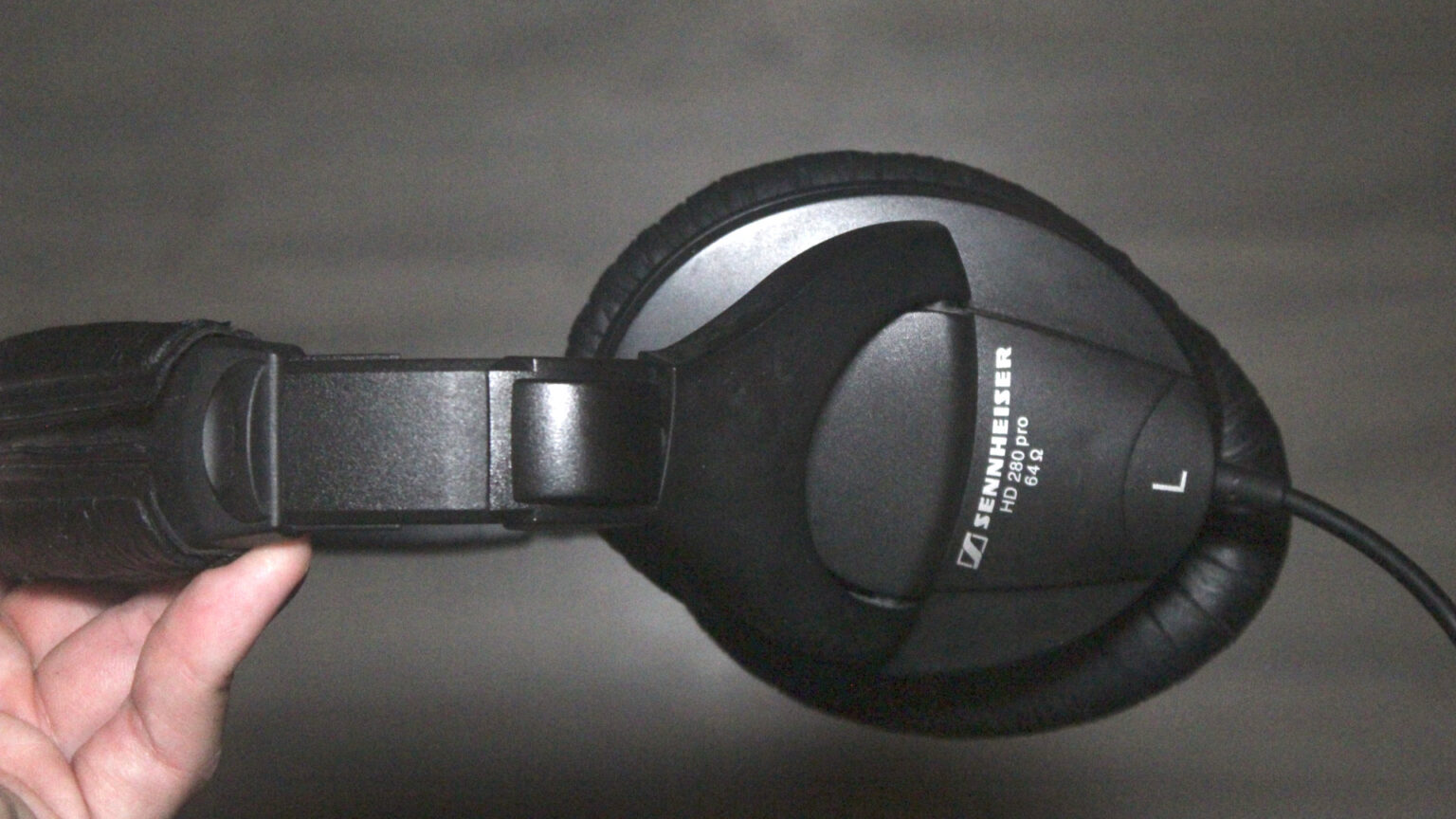
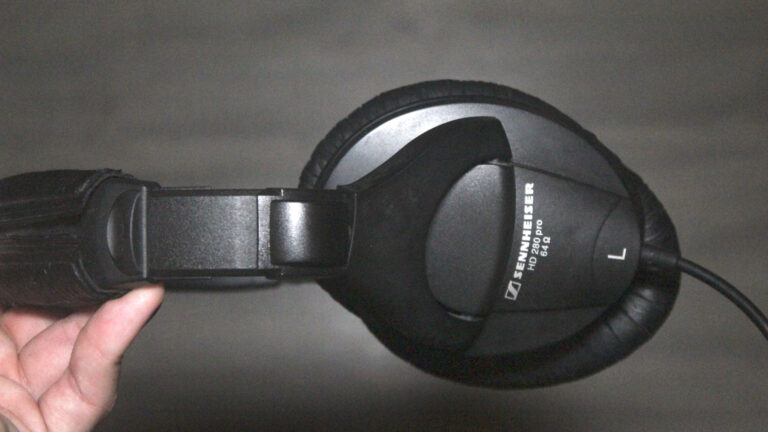



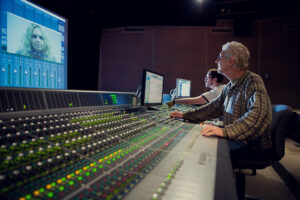



2 thoughts on “Sennheiser HD 280 PRO Review”
Thanks for extensive review … I just bought them (HD 280 PRO) for tracking, because I had a teribble noise bleed out of very cheap (but I’ve got use to them over the years…) Sony’s MDR V-250’s. The first thing that I did is I just plug them into my workstation to hear how they sound on one of my working mix … The bass explouded, the highs were so bright and for me I’ll give it a go for mixing, because mixing with previous MDR V-250’s I’ve noticed that I overdo the highs in a mix, so the HD 280 PRO did the right thing in that departement … :)) When I’m done with a mix I always go to master on speakers and there I can go back or adjust “the problems with too much high’s etc. Which one’s (headphones) do you recommend for mixing in the 200 – 300 eur price range? Also I’ve noticed you find out soonner or later the specifics of every speakers or headphones and you addapt as long as you have a high end reference point like some great mixes … Thank you for your answer. Bojan
Hey Bojan,
That’s great, I’m glad that you’re getting some good mileage out of the HD280 PROs.
If you want to go one step further for mixing and mastering, I recommend the Beyerdynamic DT770 PROs or DT990 PROs.
You’ll get into sub-bass frequencies and if you go with the 250 Ohm model, your highs will be more defined.
But, I like your method. It’s always best to reference on at least 2 different sets (headphones + monitors).
And yes, at the end of the day it’s what you’re used to working with that works best. You’ll always have compensations to make.
Thanks for your comment, all the best!
– Stefan